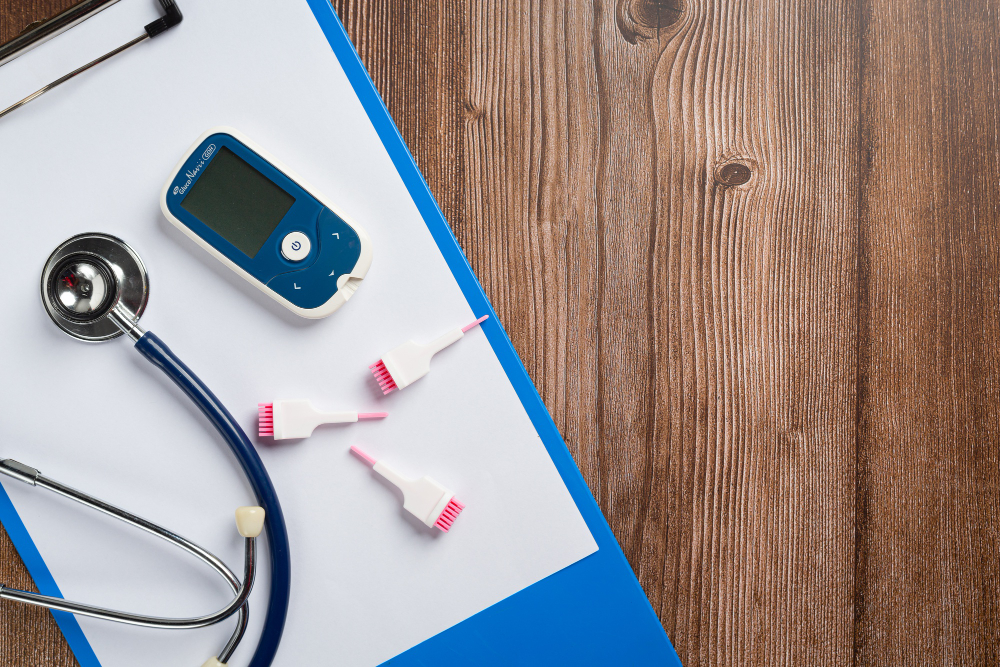
Diabetes Mellitus – HyperGlycemia, Causes, Symptoms, Diagnosis and Treatment
What is Diabetes Mellitus ?
Diabetes Mellitus is a group of metabolic disorder that caused by high amount of glucose present in the human blood for a prolonged time. Glucose is viral part of human life, almost 90% of the food we eat everyday has glucose but the glucose is the main cause of hyper glycemia (Diabetes Meletus). Not like other nutrients such as protein and fat, glucose gives instant energy to the human body. Each molecule of glucose can give 4 Kcal of energy to the human body. When we intake food, the carbohydrate in the food will break down to glucose and glucose will transfer to the bloodstream via villi in the intestine after digestion. As soon as blood gets the glucose, blood should be either demolish glucose to energy or should be stored in the human body in the name of glycogen with the help of Insulin hormone. If there is any interruption in energy conversation or storage function, then the glucose won’t let go out from blood, glucose will stay in bloodstream for a prolonged time. This condition is called hyperglycaemia (Diabetes Mellitus).
The main cause for hyperglycaemia or diabetes mellitus is the lack of insulin in our body. Any amount of glucose we intake, if we have a healthy body with the normal insulin level then the body will automatically control blood glucose level to the normal level with in a span of time. If there is any absence or shortage of insulin level will lead to diabetes.
What is insulin ?
Insulin is a hormone which produce by beta cells of pancreas which helps body to store glucose in the muscles and also it helps body to convert glucose to energy by entering glucose to the cell. If there is any shortage or absence of insulin in our body, our body will not control glucose from blood stream then the glucose level in blood remains high for a long time which leads to diabetes.
These are some causes of insulin deficiency.
- Any damage in pancreases
- Heavy smoking and Alcohol in take
- Usage of Drugs will damage pancreases
- Improper growth of pancreas
- Infections such as viral and bacterial infections.
- Insulin resistance
- Genetics or family history
- Pregnancy
- Obesity
- Lack of exercise
Types of Diabetes Mellitus :
Type 1 Diabetes:
The other name of type 1 diabetes is insulin dependent diabetes or juvenile diabetes mellitus. It is a chronic condition in which the pancreas is incapable of producing enough insulin or no production of insulin.
Cause of Type 1 Diabetes:
The exact cause of type 1 diabetes mellitus is unknown though, Genetics and viruses may be the known of cause type 1 diabetes in childhood and adolescence.
Treatment:
There is no permanent cure for type 1 diabetes. The person with type 1 diabetes may control blood glucose level to normal level with Insulin intake by mouth or by IV and It can be prevented by Proper exercise, diet and good life style.
Type 2 Diabetes:
Type 2 diabetes also known as Insulin resistance diabetes mellitus. It is a most common type of diabetes, around 95% of all diabetes patients have type 2 diabetes. It is a chronic condition in which the pancreas is not able to produce enough insulin or your cell become resistance to the insulin so body cells don’t respond to the action of insulin.
Cause of Type 1 Diabetes:
Type 2 diabetes usually occurs in middle aged and older people. The exact cause of the type 2 diabetes is unknown but genetics, age, overweight or obesity and environmental factors may play the major role in type 2 diabetes mellitus.
Treatment:
No permanent cure for type 2 diabetes. Daily insulin intake by mouth or Intravenous can control glucose level but you can prevent type 2 diabetes by regular exercise, proper diet, weight loss, health lifestyle and regular blood sugar monitoring may prevent Type 2 diabetes.
Gestational Diabetes:
This type of diabetes occurs during pregnancy. During pregnancy, mother body produce certain hormone for the baby’s growth, this hormone makes the cells more resistance to insulin.
The main cause of gestational diabetes is pregnancy. This type of diabetes can be treated with insulin intake, Weight loss, regular exercise and proper diet plan. Gestational diabetes may disappear after the labour.
Symptoms of Diabetes Mellitus
Diabetes symptoms may vary from person to person.
Most common symptoms are:
- Polydipsia – Excess intake of water due to excessive thirst.
- Polyurea – Human body produce high volume of urine due to excess intake of water.
- Polyphagia – Excessive intake of food due to increased appetite.
Other common symptoms are below
- Hunger and Fatigue
- Dry Mouth
- Frequent Urination
- Excessive Thirst
- Excessive Hunger
- Itchy Skin
- Blurred Vision
- Numbness In Arm and Fingers
- Weight Loss
- Nausea and Vomiting
- Nervousness and Anxious
- Pale Skin
- PCOD – Polycystic Ovarian Disease
Diagnosis:
Glucose can be diagnosed by different testing procedure. Oral Glucose Tolerance Test is the most common test procedure to check whether person is diabetic or not.
Different diagnosis method for diabetes
- Random Blood Glucose Test: A blood sample may take at a random time. The test can be carried out any time, Glucose level of 200mg/dl is the indication of highest level of diabetes.
- Fasting Blood Sugar Test: Before carry out this test, the patient should be advised to keep fasting over night and the test should be taken in the morning without eating anything from over night to the time the blood sample is taken. The normal level of fating glucose test is 100 mg/dL, 100 mg/dL to 125 mg/dL is the indication of prediabetes and Higher than 126 mg/dL is the confirmation that you have diabetes.
- Oral Glucose Tolerance Test: Patient will be advised to keep fasting overnight. The first blood sample will be taken after overnight fasting and the patient will be advised to drink liquid glucose or any sugary drink then the blood sample will be taken every half an hour periodically for the next 2 hours.
Oral Glucose Tolerance Test readings are below:
- Normal level: Less than 140 mg/dL
- Prediabetic: 140 to 199 mg/dL
- Diabetic: 200 mg/dL or above
Conclusion – Prevention is better than cure
Diabetes has no permanent cure. The only option is to control blood glucose level is to take insulin in the form of tablet or injection. All though we can prevent diabetes by doing regular exercise, diet plan, weight loss, avoid too much fat and sugar intake, regular insulin check-up and the healthy life style.








